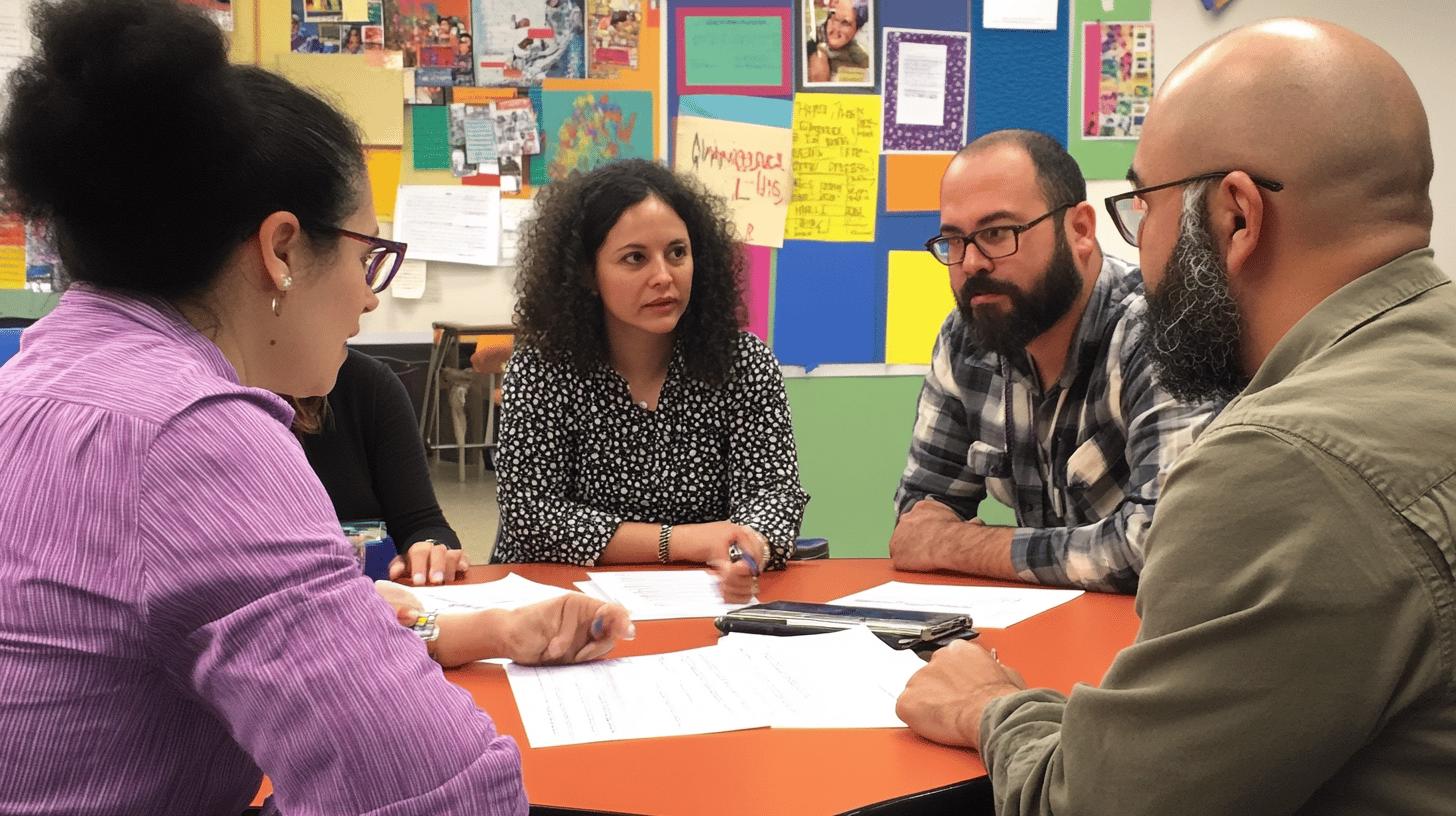In today's interconnected world, the essence of community leadership and influence lies in fostering real connections. This dynamic approach extends beyond traditional leadership roles—embracing the ability to inspire, guide, and bring people together toward a common purpose. Whether you're leading local neighborhood initiatives or partaking in global movements, the strength of your influence hinges on connecting with others meaningfully. By aligning leadership skills with genuine community building efforts, leaders empower individuals and collectives alike. Through this article, discover how effective community leaders inspire trust, harness resources, and mobilize change, all while weaving a network of authenticity and shared goals.

Community leadership and influence revolve around guiding and inspiring individuals toward shared goals and collective growth. It is not merely about holding a position but about fostering genuine relationships that encourage participation and trust. Effective leaders create environments where diverse voices are heard, and resources align organically to nurture a sense of belonging. This authentic engagement becomes the backbone of thriving communities, enabling long-term impact. Strong community leaders embody key characteristics that drive meaningful influence:

Effective community leadership is grounded in core qualities that foster trust, inspire participation, and align diverse individuals around shared values. Leaders who demonstrate empathy create safe spaces where members feel heard and understood. Integrity ensures credibility, while a steadfast commitment to community values sustains long-term engagement. Inspirational leaders also guide through example, blending vision with practical decision-making to enable meaningful community initiatives. Key leadership qualities include:

Building community leadership and influence starts with adopting leadership approaches that emphasize service and transformation. Transformational leadership inspires members by aligning their values and encouraging personal growth, while servant leadership focuses on meeting the needs of the community first. Both approaches foster trust and commitment, enabling leaders to guide diverse groups toward shared goals effectively. Seasoned leaders understand that influence is not about authority alone but about cultivating authentic connections and empowering others. Successful community leaders implement actionable strategies that drive engagement and growth. These include:

Effective communication stands at the core of impactful community leadership. Leaders who master public speaking foster trust and clarify community goals, making their vision accessible and motivating. Clear communication helps align diverse members around shared purposes, strengthening the fabric of the community. Key communication strategies critical to leadership include:

Community leadership often requires navigating complex challenges such as conflicts, diverse interests, and limited resources. These obstacles can strain relationships and hinder progress if not addressed effectively. Successful leaders recognize that overcoming these hurdles demands patience, adaptability, and well-honed conflict resolution skills to maintain a thriving, unified community. Key challenges and strategies for effective community leadership include:
.png)
Historical examples of community leadership provide a rich foundation for understanding how influence can be wielded effectively. Leaders like Martin Luther King Jr. and Mahatma Gandhi exemplify the power of transformational and servant leadership models, inspiring millions through their commitment to justice, peace, and collective growth. Their legacies demonstrate how aligning personal values with community goals creates lasting impact. Martin Luther King Jr. mobilized communities across the United States through nonviolent protests and persuasive communication, emphasizing equality and human rights. His leadership was marked by a clear vision and the ability to inspire trust and courage among diverse groups. Gandhi’s approach centered on servant leadership—leading by example through humility and service. His campaigns for India’s independence showcased how grassroots advocacy and persistence can shift societal norms and policies. In more recent contexts, community leaders have applied these models in organizing local events, advocacy campaigns, and public initiatives that foster belonging and mutual support. These leaders blend empathy, integrity, and strategic communication to engage diverse members and sustain momentum over time. They utilize community-building tactics that encourage participation and harness collective resources to overcome challenges.
The Journey app supports emerging and seasoned community leaders by providing a vibrant platform that nurtures leadership through real connections and meaningful interaction. Journey’s customizable communities act as hubs where leaders can organize discussions, share updates, and coordinate events that showcase community achievements. The app’s AI Sidekick enhances this experience by offering personalized onboarding, content curation, and moderation—ensuring a safe, trustworthy environment that fosters continuous growth. By leveraging Journey’s robust tools, community leaders can expand their influence and sustain engagement, turning ideas into fulfilling endeavors that enrich the lives of like-minded individuals. The platform’s focus on authentic connections and customized experiences empowers leaders to guide their communities with clarity and purpose, driving long-term success and mutual support.
.png)
Digital tools are reshaping the landscape of community leadership and influence, making it easier than ever to build genuine connections and drive meaningful engagement. Journey stands out as a vibrant social network designed to support individuals seeking authentic interactions and purpose-driven communities. By offering robust features tailored to community building, Journey empowers leaders to cultivate influence through real connections and collaborative initiatives. Journey’s platform offers an integrated hub that caters to the diverse needs of community leaders and members alike. Key benefits include:

Community leadership is evolving rapidly, guided by theories such as transformational and servant leadership that emphasize inspiring others and serving the collective good. These models highlight the importance of aligning personal values with the community’s needs, fostering long-term engagement and mutual growth. Today’s leaders are increasingly relying on digital platforms and collaborative projects to expand their influence and deepen connections within diverse groups. Adaptive leadership is becoming crucial as communities face dynamic challenges and shifting cultural landscapes. Digital transformation enables leaders to connect seamlessly with members across geographies, enhancing communication and participation. Platforms like Journey exemplify this shift by offering integrated tools for community creation, real-time engagement, and personalized support through AI-powered features. These innovations help leaders implement strategic plans more effectively while maintaining a safe and trustworthy environment that nurtures authentic interaction. Looking ahead, community initiatives will prioritize inclusivity, sustainability, and resilience. Leaders will need to cultivate cultural competency to navigate diverse perspectives and foster belonging. Strategic planning will integrate advanced communication technologies and leverage empowered volunteer networks to ensure collective success. Innovative governance models will emerge, emphasizing transparency and shared decision-making. Anticipated trends in community leadership include:
Exploring community leadership and influence involves understanding the pivotal role of guiding initiatives, embracing leadership skills, and inspiring communal growth.
From fostering effective communication to overcoming challenges, leaders shape community landscapes. The Journey app emerges as a valuable tool, offering support in strategic development, networking, and mentorship.
Leveraging its features enriches leadership capabilities, paving the way for sustainable, inclusive, and impactful community building.
Stay engaged, adapt, and continue to empower communities through meaningful leadership practices and digital innovation.
Community leadership is the ability to guide and influence a group towards shared goals. It involves inspiring trust, mobilizing resources, and fostering collaboration among community members to achieve common objectives.
The three key components of community leadership are guiding community initiatives, building consensus, and inspiring shared values. These elements work together to strengthen community bonds and drive collective progress.
Examples of community leadership include organizing local events, spearheading advocacy efforts, and facilitating volunteer projects. Influential leaders like Martin Luther King Jr. and Mahatma Gandhi effectively harnessed these roles to drive societal change.
Five examples of community leaders are neighborhood association presidents, local business group leaders, school board members, public health advocates, and environmental activists. These leaders play pivotal roles in building resilient and vibrant communities.
Community leaders influence by fostering trust, encouraging collaboration, and mobilizing resources. They uplift communities by addressing concerns, advocating for change, and uniting people around shared goals.
An example of leadership and influence is a community leader who successfully campaigns for local policy changes, garnering community support through advocacy and outreach efforts, ultimately improving living conditions for residents.
For students, community leadership examples include organizing school events, leading student councils, participating in mentorship programs, and running community service projects. Such activities help students develop essential leadership skills.
Types of community leadership include transformational leadership, servant leadership, collaborative leadership, and situational leadership. Each type focuses on varied approaches to inspire and guide community members toward achieving goals.